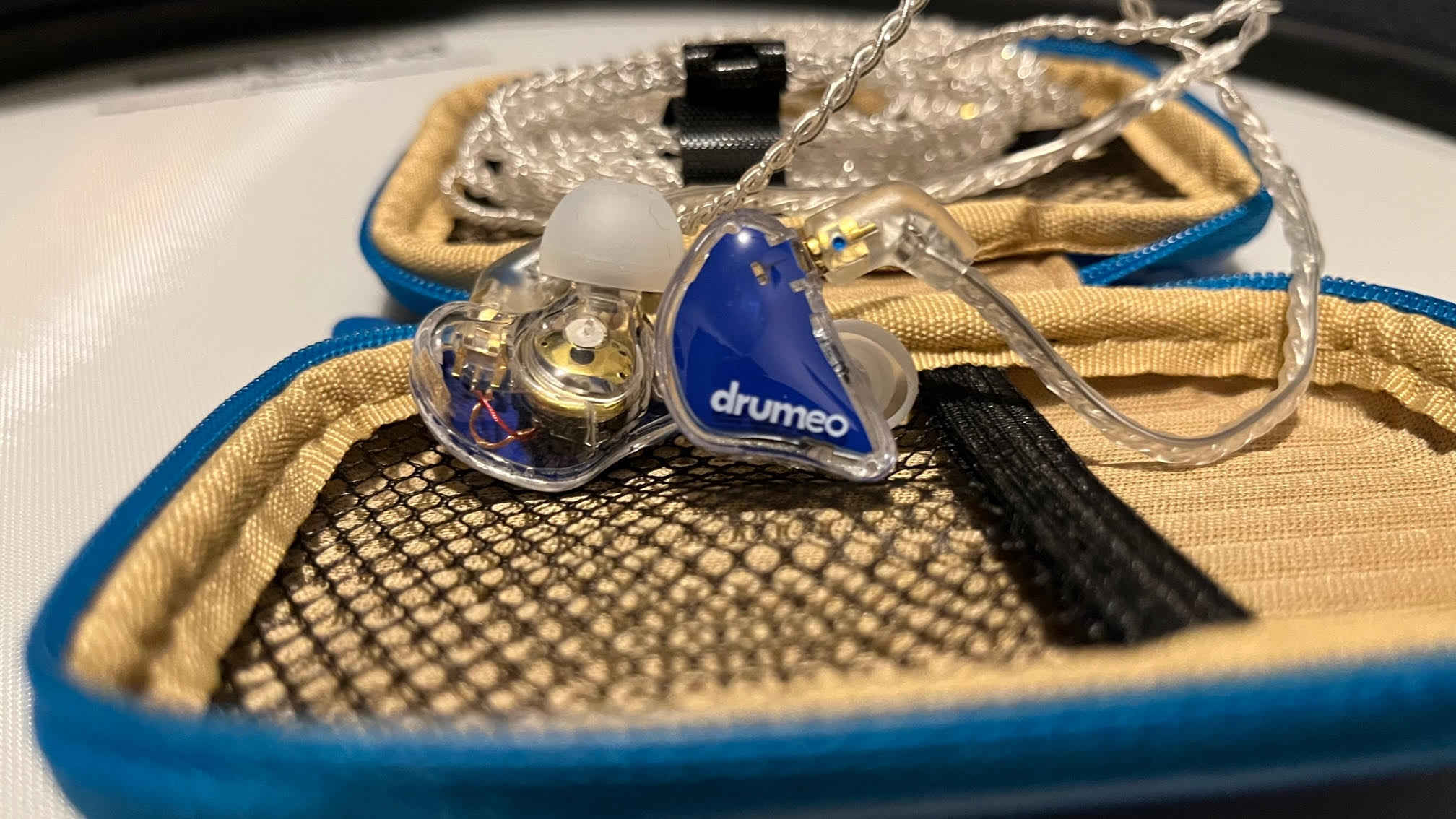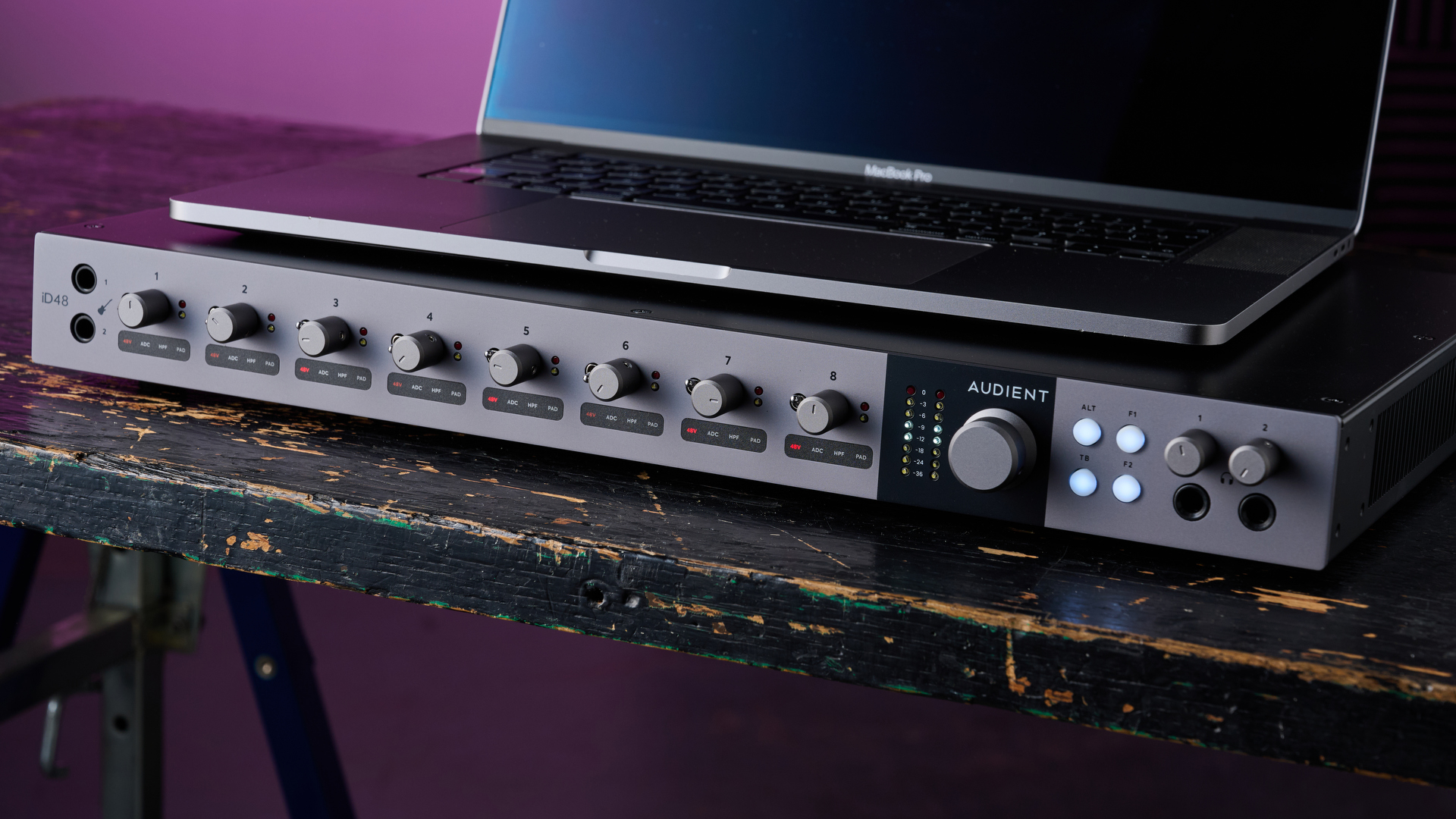MusicRadar Verdict
There are a fair few name-brand options in this price bracket, but Drumeo’s EarDRUMS offer a solid, comfortable and well-thought-out solution for those looking to make the jump into in-ears. Many of the benefits they provide could be said of similar products, but the overall package makes these a great choice.
Pros
- +
Affordable in-ear monitors with a good range of accessories at a sweet-spot price
Cons
- -
They only come in blue!
MusicRadar's got your back
Drumeo EarDRUM in-ear monitors review: What is it?
In-ear monitoring has never been so accessible, and that’s great news that’s perhaps most important to drummers over the rest of the band. Why’s that? Well, first up, we’re sat at the back, farthest away from the front of house PA speakers, and either parallel to or behind the backline amps as well, so without some form of monitoring we’re already on the back foot when it comes to hearing what’s going on.
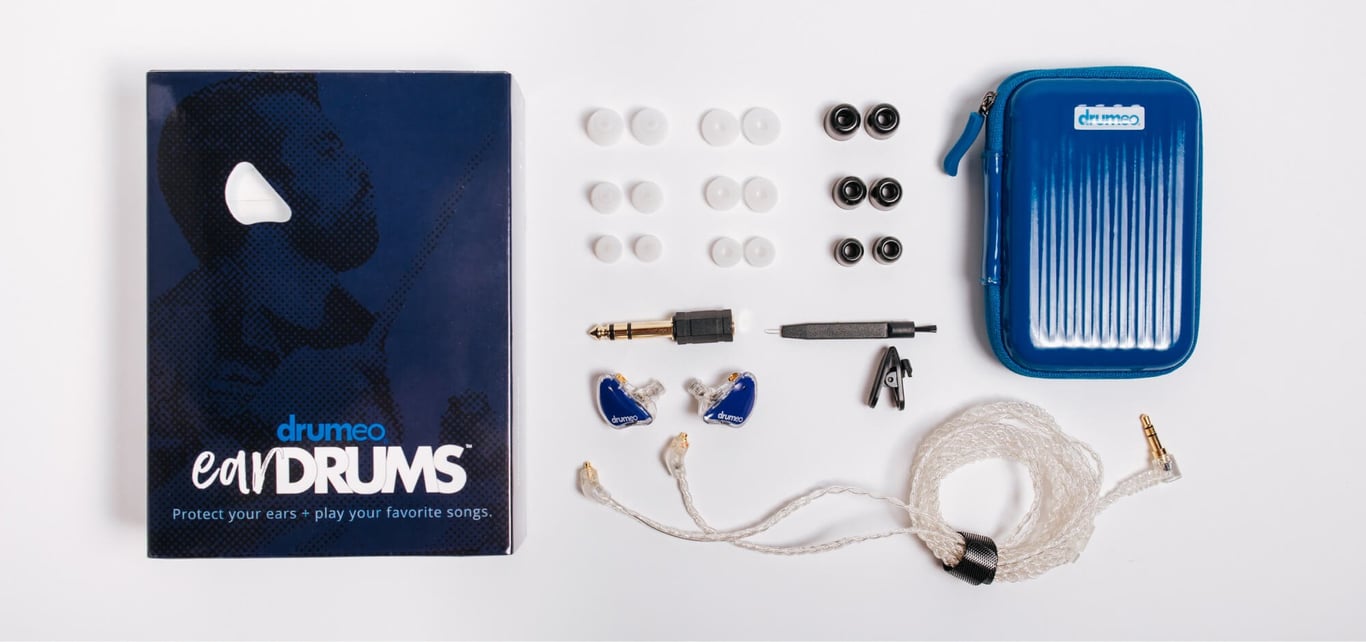
Drivers: 2x dynamic drivers, 1x active armature Cable: 1.5m, silver-plated, MMXC connector, flexible ear fit Accessories: 3x single-layer silicone tips, 3x triple-layer silicone tips, 3x memory foam tips, cleaning brush, clothing clip, jack adaptor, carrying case Buy from: Drumeo
Next is the ever-growing popularity of running samples and click tracks in a live show (the latter of which we don’t want the audience to hear), the responsibility of which usually falls to us timekeepers. Then there’s the fact that unlike our mobile bandmates, we’re sat in the same spot all night, which means we don’t have to worry about buying a fancy wireless system to use our IEMs either.
Not playing live? IEMs work as an excellent alternative to headphones for electronic drum kits, or for playing-along to music on our acoustic kits. But while hearing ourselves and everything else is crucial, good-quality in-ears also serve as hearing protection by sealing out the overly-loud ambient sound, meaning that what’s delivered direct to our lug-holes is much more controllable.
The budget in-ear market is pretty much dominated by Shure’s entry-level SE215s, but online drum lesson platform, Drumeo has recently launched some in-ears of its own, called Drumeo EarDRUMS. “In-ears by drummers, for drummers” reads Drumeo’s website, so can drummers create great monitors at an affordable price-point? Let’s take a dive down the earhole.
Drumeo EarDRUM in-ear monitors review: Performance & verdict
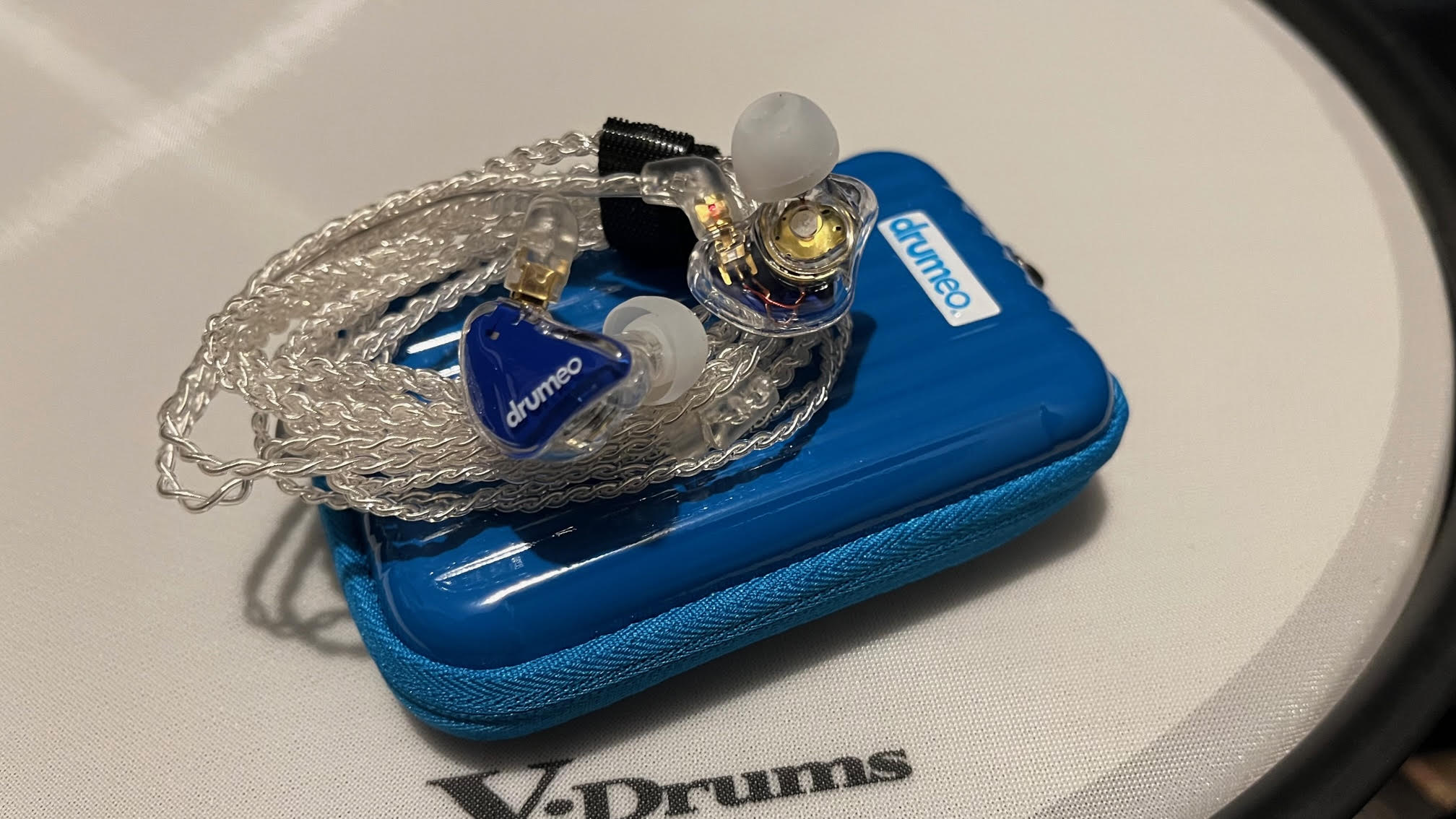
Our EarDRUMS came boxed-up in some smart packaging. Inside are the EarDRUMS (the speaker bit), a 1.5m, silver-plated cable wrapped in a durable coating, and a collection of silicone tips to help get the right fit for your ears, plus a Drumeo branded carrying case to keep everything together.
But that’s not all, Drumeo includes a brush for cleaning (sadly, that is a chore you’ll need to undertake, regardless of brand), an adaptor in case you need to connect to a quarter-inch jack rather than the 3.5mm plug on the cable, and there’s even a handy little sprung clip so that you can attach the trailing wire to your clothing in order to keep it from getting in the way.
The cable attaches to the EarDRUMS via a standard MMXC connector, which allows for 360-degree rotation without creating tangles - a must for IEMs. The ear-end of the cable is formable to bend around the top of your ear and keep the buds in place while you play. The clothing clip anchors everything too, just don’t forget you’re attached when you take the EarDRUMS out!
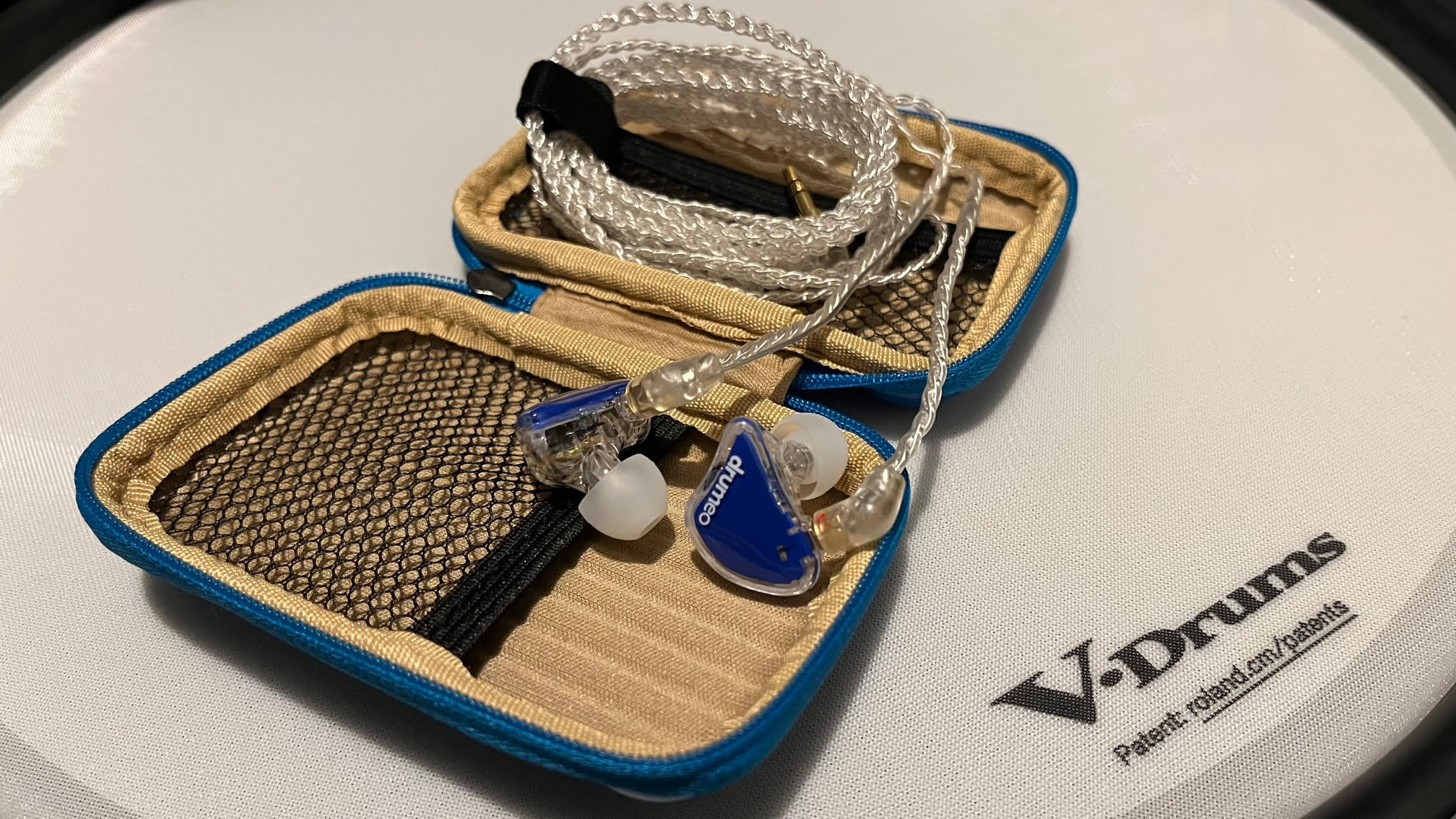
Now, a big selling point for hearing protection and in-ear monitors is the seal. The most accurate way to achieve near-total lock-out of external sound is by opting for custom moulded plugs/monitors, but as you might expect, having an impression of your lugs taken for bespoke-fit earbuds is expensive.
The next best alternative is to make sure that you’re using the correct tip on your monitors. Drumeo supplies three different types: there are single-layer silicone, triple-layer silicone and memory foam tips in the box. There’s no real rule as to which you should use, more a question of finding the right fit.
We started by trying a set of the silicone tips that were pre-installed, before switching to the triple-layer and memory foam options. The tips you choose will come down to comfort and fit, and this is obviously a case of your personal preference.
We did, however, find that the triple-layered silicone struck the best balance between comfort, fit/seal and grip when it came to staying put. These were closely followed by the memory foam tips, which while giving the tightest fit (and therefore seal), also increased the sense of isolation, and could become fatiguing in the ear canal over time.
We found that the triple-layered silicone struck the best balance between comfort, fit/seal and grip when it came to staying put
Blocking-out sound is one thing, but it’s only part of the story. Inside each EarDRUM are two dynamic drivers, plus a balanced armature. Combined, Drumeo says this adds up to sound reproduction from 18Hz to 22kHz, or in other words, all the frequencies you’re likely to be able to produce or hear and beyond. They’re also designed to be low impedance, so you won’t need to crank the volume as high to be able to hear them.
In practice, this adds up to a balanced, clear sound across the frequency ranges. You’re unlikely to ever get huge, bone-rattling bass from in-ears of this type, and if you’re the kind of player who likes to feel as well as hear the lower frequency from your kit, a sub-woofer or tactile monitoring solution for low end such as the Porter & Davies line of drum thrones will be the perfect accompaniment.
We tried the in-ears in live situations, as well as on our electronic drum set while also jamming to music. In the former, they performed just as described, allowing us to clearly hear the rest of the band without the usual struggle of overly-loud, potential feedback-inducing wedge monitors. In this scenario, we noticed a bit of high-end response lacking, but this could just as easily have been down to the EQ of the signal of our in-ears.
Back at the electronic kit, with no other instruments to interfere, our incoming streamed tracks and the sound of our kit is as familiar as our regular, over-ear headphones with plenty of detail and none of the mid-focussed ‘honk’ that you sometimes get with budget monitors. Best of all, we didn’t have to crank the volume control to max in order to get them to pump the sound out.
Drumeo EarDRUM in-ear monitors review: Hands-on demos
Rob Brown

Andrew Rooney Drums
Drumeo EarDRUM in-ear monitors review: Specification
- Drivers: 2x dynamic drivers, 1x active armature
- Cable: 1.5m, sliver-plated, MMXC connector, flexible ear fit
- Accessories: 3x single-layer silicone tips, 3x triple-layer silicone tips, 3x memory foam tips, cleaning brush, clothing clip, jack adaptor, carrying case
- Contact: Drumeo

I'm a freelance member of the MusicRadar team, specialising in drum news, interviews and reviews. I formerly edited Rhythm and Total Guitar here in the UK and have been playing drums for more than 25 years (my arms are very tired). When I'm not working on the site, I can be found on my electronic kit at home, or gigging and depping in function bands and the odd original project.
“It has the ingenious ability to give you easy routing to external hardware with no re-patching”: Audient iD48 review
“If this was real, it would be really impressive. But since it’s not real, it’s really impressive": Watch the bonkers four-note piano
Watch UK electronic artist Lawrence Hart build a track from scratch in his hardware-stuffed studio
